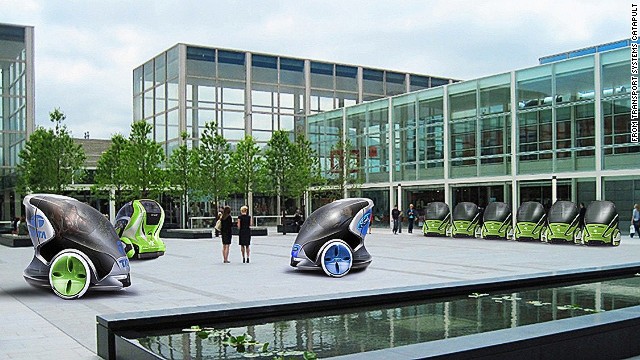TheGreenCarWebsite.co.uk: Sales of electric cars across Europe have doubled every year since 2010, according to a new report from environmental NGO, T&E.
Last year alone, around 50,000 plug-in vehicles were sold in Europe, representing 0.4 per cent of the total market for new cars sales.

While electric vehicles still represent a tiny fraction of overall new car sales, 2013’s sales figures were still a massive improvement on the year before, when around 24,203 plug-in vehicles sold during 2012. Just 700 EVs sold in 2010.
While the future for EVs sales is uncertain, T&E says that if a similar trajectory continues, then Europe could see plug-in sales exceed 100,000 by 2015, 500,000 by 2021 and 1 million by 2025.
As the market for electric cars grows, there are new models gaining ground in the battle for sales. In 2013, the top three selling plug-in vehicles were all new entrants to the market; the Renault ZOE, Mitsubishi Outlander PHEV and the Volvo V60 Plug-in.
In contrast, sales of the best selling models of 2012 fell significantly, with the Opel/Vauxhall Ampera, Peugeout iON and Citroen C-Zero all struggling to keep pace with the new competition.
The new report also shows how Europe now represents a quarter of the global market for plug-in vehicles (which includes plug-in hybrids, range-extended models and fully electric cars). Sales in California remain the highest in the world driven by a mandatory but tradeable requirement on carmakers to supply small numbers of EVs in the state. As a result of this requirement, the state benefits from the availability of extra EV models, some of which are produced almost exclusively for the state including the Fiat 500e, Toyota RAV4 EV, Honda Fit EV and Chevrolet Spark EV.
T&E says it would like to see a similar requirement in Europe rather than the current flawed ‘supercredits’ system, which it says means that electric vehicles essentially allow carmakers to avoid making efficiency improvements to their conventionally fuelled vehicles.
Cars remain responsible for 15 per cent of Europe’s total CO2 emissions, and are the largest source of emissions within the transport sector.
Current EU legislation requires carmakers to meet a fleet average of 95g/km CO2 by 2021. Through the supercredit system, carmakers are rewarded for the production of a small volume of electric vehicles, allowing them to reduce their average CO2 figure without necessarily making improvements to their combustion models.
Last year alone, around 50,000 plug-in vehicles were sold in Europe, representing 0.4 per cent of the total market for new cars sales.

While electric vehicles still represent a tiny fraction of overall new car sales, 2013’s sales figures were still a massive improvement on the year before, when around 24,203 plug-in vehicles sold during 2012. Just 700 EVs sold in 2010.
While the future for EVs sales is uncertain, T&E says that if a similar trajectory continues, then Europe could see plug-in sales exceed 100,000 by 2015, 500,000 by 2021 and 1 million by 2025.
As the market for electric cars grows, there are new models gaining ground in the battle for sales. In 2013, the top three selling plug-in vehicles were all new entrants to the market; the Renault ZOE, Mitsubishi Outlander PHEV and the Volvo V60 Plug-in.
In contrast, sales of the best selling models of 2012 fell significantly, with the Opel/Vauxhall Ampera, Peugeout iON and Citroen C-Zero all struggling to keep pace with the new competition.
The new report also shows how Europe now represents a quarter of the global market for plug-in vehicles (which includes plug-in hybrids, range-extended models and fully electric cars). Sales in California remain the highest in the world driven by a mandatory but tradeable requirement on carmakers to supply small numbers of EVs in the state. As a result of this requirement, the state benefits from the availability of extra EV models, some of which are produced almost exclusively for the state including the Fiat 500e, Toyota RAV4 EV, Honda Fit EV and Chevrolet Spark EV.
T&E says it would like to see a similar requirement in Europe rather than the current flawed ‘supercredits’ system, which it says means that electric vehicles essentially allow carmakers to avoid making efficiency improvements to their conventionally fuelled vehicles.
Cars remain responsible for 15 per cent of Europe’s total CO2 emissions, and are the largest source of emissions within the transport sector.
Current EU legislation requires carmakers to meet a fleet average of 95g/km CO2 by 2021. Through the supercredit system, carmakers are rewarded for the production of a small volume of electric vehicles, allowing them to reduce their average CO2 figure without necessarily making improvements to their combustion models.

 London has been in breach of European targets on air pollution
London has been in breach of European targets on air pollution

 Nissan is one of many companies developing self-drive vehicles
Nissan is one of many companies developing self-drive vehicles



















